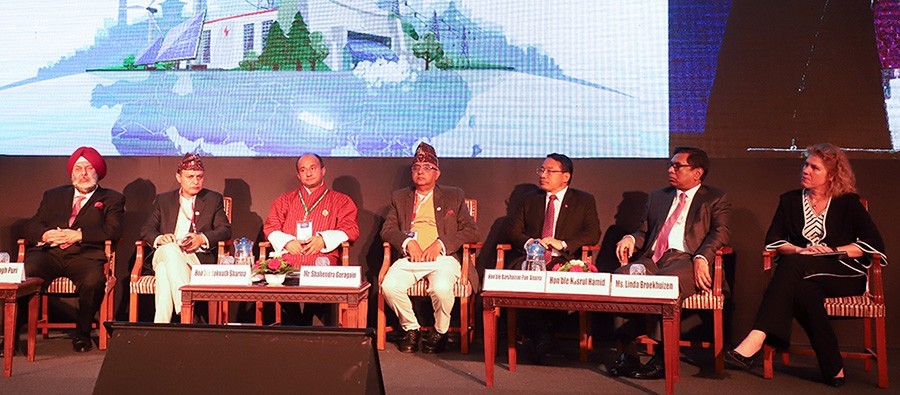7th Power Summit kicks off; 95% Households Have Access To Power: WB

Kathmandu / Nov. 21: About 95 per cent households in Nepal have access to electricity while 72 per cent have access to reliable, affordable and uninterrupted access to electricity for a significant part of the day, marking remarkable progress over the past decade, according to a first-of-its-kind national survey conducted by the World Bank in 2017.
The report was launched at the seventh edition of the Power Summit organised by the Independent Power Producers Association of Nepal in Kathmandu on Thursday.
Despite progress on the coverage and quality of electricity access, about the same number of households – 70 out of 100 – continue to use firewood and other polluting and harmful fuels for cooking, the survey showed.
Providing access to high-quality energy services to each and every person is one of the high priorities of the government. We are working to achieve 100 per cent energy access by 2023,” stated Dinesh Kumar Ghimire, Secretary, Ministry of Energy, Water Resources and Irrigation.
About 67 per cent of households had uninterrupted access to electricity for at least eight hours a day, where supply is affordable, reliable and conducive for the use of household appliances like fans and televisions.
Overall, about 71.7 per cent of households drew electricity from the national grid, while 23 per cent were connected to off-grid sources like micro or mini-hydro and solar power, the survey showed.
“Since this 2017 survey, Nepal has made further progress by increasing grid electrified population from 72 per cent to 78 per cent. The country has become load shedding-free since 2018. We celebrate these achievements made by Nepal and are proud of being a partner with the government in further improving the quality of energy services for lighting and clean cooking and better the life of the people in Nepal,” stated Faris H. Hadad-Zervos, World Bank Country Manager for Nepal.
Despite progress on the quality of electricity access, clean cooking remains a challenge for Nepal.
Firewood, which is polluting and causes a myriad of health issues particularly for women and children, remains the most widely used source of cooking fuel.
About 73.5 per cent of households said they cooked with firewood, animal waste, crop residue or plant biomass. Less than two out of 10 households – about 17.5 per cent – have access to modern cooking services, according to the survey.
“With adequate electricity supply in the days to come needs to replace the heavy reliance on imported LPG for cooking, the government will put more emphasis on clean cooking solutions and aim to achieve one electric stove in every home, as stated in the vision laid out in the Energy White Paper in 2018,” said Madhusudhan Adhikari, Executive Director of Alternative Energy Promotion Centre.
The survey suggested that for households to switch to clean fuels such as electric stoves or biogas in the long run, Nepal requires a multi-pronged approach.
